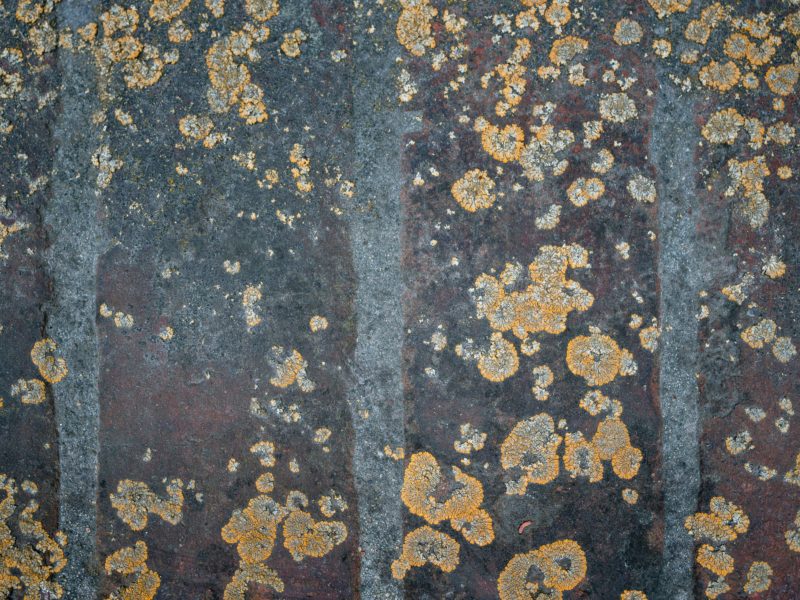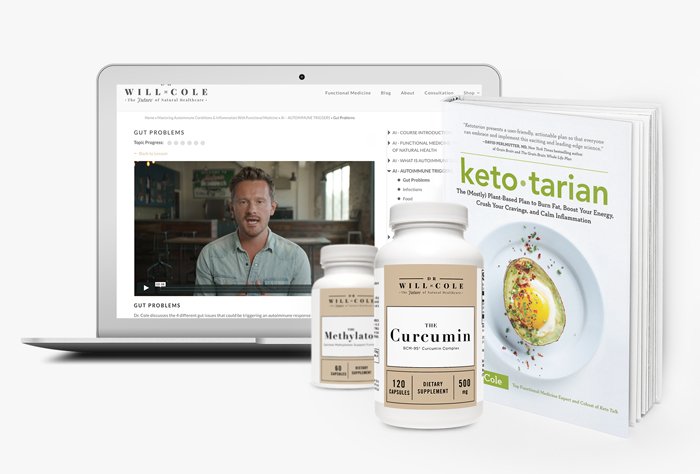Worried About Mold Exposure? Here’s What You Need To Know

If you eat a healthy diet, exercise, and manage stress but you’re still dealing with inflammation-related health issues, mold may be to blame. Exposure to mold can trigger health issues, and exacerbate existing health problems, by triggering an inflammatory storm in the body.
That’s why, anytime I have a patient in my office I ask them questions like, “Does your home ever get wet or flood?” and “When you come home from a trip, do you ever notice that your home smells of must or mildew?”
If you answered yes to either of those questions or you simply aren’t feeling your best and expect mold might be contributing to the problem, read on for everything you need to know about this unwanted houseguest.
Mold 101: What is mold and how do you diagnose it?
Mold is a fungus that exists anywhere there is moisture; so basically, it’s everywhere — in the air and vents, under the floor, and in your walls and carpet. Some mold is okay, but when you’re exposed to too much toxic mold it can trigger inflammation and even a condition called “chronic inflammatory response syndrome,” or CIRS. This may be the first time you’re hearing about CIRS; it’s a helpful term many functional medicine doctors use to describe the combination of symptoms people experience in response to mold and other triggers.
CIRS is harmful because when you breathe in mold spores, it can cause a lot of vague symptoms that are difficult to diagnose and link directly to the mold. For example, mold can worsen conditions like asthma, allergies, chronic fatigue, or autoimmune conditions but it does not necessarily cause them in the first place, although it can be a trigger for some.
ARTICLE CONTINUES BELOW
Make Your Life a Cleanse
SUBSCRIBER-ONLY GUIDES FOR GUT HEALTH, VIBRANT ENERGY, HEALTHY FOOD & CLEAN ALCOHOL
Get FREE access to these + giveaways, recipes, & discount codes in personal emails from Dr. Will Cole.
So how do you diagnose mold exposure? In my functional medicine practice, I diagnose mold by running the following tests:
Mycotoxin Tests:
Mycotoxins are compounds released by different mold species that are toxic to the body. I often run mycotoxin labs through Cyrex Laboratories or the Great Plains Laboratory, which measure for mycotoxins in your urine as well as antibodies in your blood the body has produced to fight off these toxins. These labs tend cost somewhere between $400 to $600, and are not typically covered by insurance.
Visual Contrast Sensitivity (VSC) Tests:
The coolest part of these tests is that they can be done online at home, often for free. They test your ability to distinguish contrast between black, white, and grey tones since certain molds can have neurotoxic effects, which can manifest as inhibited vision. You can find the VCS test online for free or for a small donation.
Blood Tests:
- C3a and C4a blood immune markers: C3a and C4a are blood immune markers. Low C3a levels can be a helpful hint that there’s mold toxicity and C4a is a very dependable biomarker for the exact level of mold overload.
- Melanocyte-stimulating hormone: This hormone may possess antifungal and antimicrobial properties (2) and low levels of MSH have been linked with mold toxicity symptoms. (3)
- Vasoactive intestinal polypeptide: This hormone regulates inflammation in the hypothalamus and according to some early research, people with mold toxicity tend to have lower VIP levels.
Genetic testing:
I often have my patients do a 23andMe test to assess their genetic health risk for developing mold toxicity symptoms. For example, genetic variants within the HLA and MTHFR genes may influence your risk of developing severe symptoms. These saliva tests cost around $200 dollars and can be done in the comfort of your own home.
Checking for mold:
Another important piece of the puzzle is finding the source of your mold exposure. Then, if you can find it, have it removed. This requires hiring a professional to come to your house. If you’ve determined that you’ve been exposed to mold, go to this online directory from the National Organization of Remediators and Mold Inspectors to find an inspector. Depending on the extent of the damage, the cost could be very minimal or, in severe cases, up to a few thousand dollars.
How do you treat mold exposure?
If you test positive for mold exposure, find the source and eliminate it. Next, take additional steps to help your body recover as quickly and efficiently as possible. Here are five steps that I often recommend to my patients:
1. Supplement with glutathione
Glutathione is often referred to as the “master antioxidant” because it increases your body’s production of other antioxidants. When you’re exposed to mold, it can impact your glutathione levels (4) and sabotage your body’s defense against oxidation and free radical damage. Glutathione is sold in supplement-from but eating sulfur-rich foods, such as broccoli, cauliflower, and Brussels sprouts can also help increase glutathione production in the body.
2. Get some sunshine
Direct sun exposure has been shown to raise MSH levels, a hormone that is often low (5) when you have mold toxicity. I ask my clients to get at least 20 minutes of sunshine each day (preferably more like 60) depending on where they live and their skin tone.
3. Adopt a Ketotarian Diet
The Ketotarian diet is a mostly-plant based, anti-inflammatory diet. That means filling your plate with clean protein from vegetables and nuts and seeds, plant-based healthy fats like coconuts and avocados, and non-starchy vegetables like dark leafy greens, to support your body’s natural detoxification system.
4. Consider binders
Binders are naturally-occurring minerals that bind to mycotoxins in your system and help your body remove them. One specific type of binder is called a zeolite. Typically, zeolites are expensive so another option is activated charcoal as well as the cholesterol-lowering medication cholestyramine. One small study has suggested cholestyramine may be an effective therapeutic agent for patients with mold toxicity symptoms.
5. Bolster nicotinamide adenine dinucleotide (NAD+)
NAD+ is a coenzyme that lives in every cell of your body. Its main job is repairing damaged DNA and supporting general cellular health. You can supplement with a specific type of B3, called nicotinamide riboside, to support NAD+ levels and your cells’ ability to detox from mold.
Together, all these steps will help you determine whether mold exposure is a problem for you, fix your mold problem, and detox from the exposure using diet and natural remedies. Mold seems scary at first, but as long as you follow these steps you can recover from the inflammatory cascade caused by mold exposure.
As one of the first functional medicine telehealth clinics in the world, we provide webcam health consultations for people around the globe.
Photo: unsplash.com
Start Your Health Journey Today
FUNCTIONAL MEDICINE CONSULTATIONS FOR PEOPLE AROUND THE WORLD
References:
- “CDC – Mold – General Information – Basic Facts.” Centers for Disease Control and Prevention, Centers for Disease Control and Prevention, 16 Dec. 2019, www.cdc.gov/mold/faqs.htm.
- Cutuli, Mariagrazia, et al. “Antimicrobial Effects of α‐MSH Peptides.” JLB, John Wiley & Sons, Ltd, 1 Feb. 2000, jlb.onlinelibrary.wiley.com/doi/abs/10.1002/jlb.67.2.233.
- Ritchie C. Shoemaker, Dennis E. House, A time-series study of sick building syndrome: chronic, biotoxin-associated illness from exposure to water-damaged buildings, Neurotoxicology and Teratology, Volume 27, Issue 1, 2005, Pages 29-46, ISSN 0892-0362, https://doi.org/10.1016/j.ntt.2004.07.005.
- Guilford, F. T., & Hope, J. (2014). Deficient glutathione in the pathophysiology of mycotoxin-related illness. Toxins, 6(2), 608–623. https://doi.org/10.3390/toxins6020608
- Shoemaker, Ritchie C., and Dennis E. House. “A Time-Series Study of Sick Building Syndrome: Chronic, Biotoxin-Associated Illness from Exposure to Water-Damaged Buildings.” Neurotoxicology and Teratology, Pergamon, 13 Sept. 2004, www.sciencedirect.com/science/article/abs/pii/S089203620400114X.
View More At Our Store
Purchase personally curated supplements
and Dr. Will Cole’s books!

The information on this website has not been evaluated by the Food & Drug Administration or any other medical body. We do not aim to diagnose, treat, cure or prevent any illness or disease. Information is shared for educational purposes only. You must consult your doctor before acting on any content on this website, especially if you are pregnant, nursing, taking medication, or have a medical condition.
Our articles may include products that have been independently chosen and recommended by Dr. Will Cole and our editors. If you purchase something mentioned in this article, we may earn a small commission.

BY DR. WILL COLE
Dr. Will Cole, DNM, IFMCP, DC is a leading functional medicine expert who consults people around the globe, starting one of the first functional medicine telehealth centers in the world. Named one of the top 50 functional and integrative doctors in the nation, Dr. Will Cole provides a functional medicine approach for thyroid issues, autoimmune conditions, hormonal imbalances, digestive disorders, and brain problems. He is the host of the popular The Art Of Being Well podcast and the New York Times bestselling author of Intuitive Fasting, Ketotarian, The Inflammation Spectrum and the brand new book Gut Feelings: Healing the Shame-Fueled Relationship Between What You Eat and How You Feel.

Gut Feelings
Healing The Shame-Fueled Relationship
Between What You Eat And How You Feel
